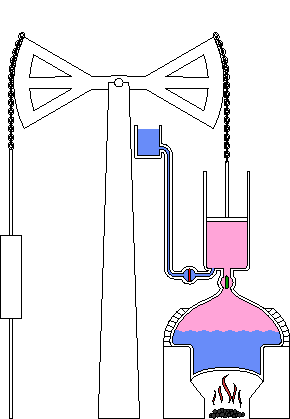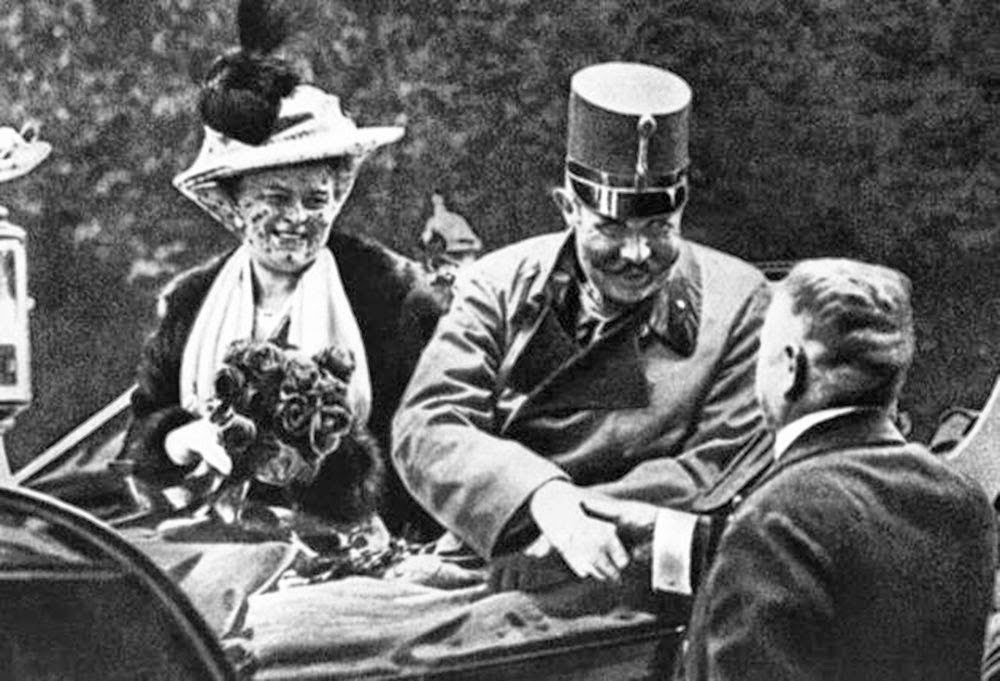 November 6-9,1900, the Automobile Club of Great Britain and Ireland sponsored an electric vehicle endurance trial. Which the 4-wheel drive would win the Lohner-Porsche was one of eleven entrants-one of three entrants that Hart brought`to the starting line Chislehurst. The first-place winner of the trial was to Louis-Kreiger car dubbed the 'Powerful' as seen. Largely thanks to its lighter weight and larger diameter wheels. It achieved a first run of 59 miles at an average of about 10 miles per hour. 'The Toujours Contente' Suffered tire failures on its journey 34 miles with Porsche at the wheel. One competitor Stated, "there were inches of mud on the floors; rain came through the roof, the sheds were door-less and the cars and attendants were nightly exposed to the full force of wind and rain. "Other electric vehicle entrants managed only 7 miles distance through the muddy rutted course. Ferdinand Porsche caught a severe cold, contributing to the vehicle's elimination from further top competition.
November 6-9,1900, the Automobile Club of Great Britain and Ireland sponsored an electric vehicle endurance trial. Which the 4-wheel drive would win the Lohner-Porsche was one of eleven entrants-one of three entrants that Hart brought`to the starting line Chislehurst. The first-place winner of the trial was to Louis-Kreiger car dubbed the 'Powerful' as seen. Largely thanks to its lighter weight and larger diameter wheels. It achieved a first run of 59 miles at an average of about 10 miles per hour. 'The Toujours Contente' Suffered tire failures on its journey 34 miles with Porsche at the wheel. One competitor Stated, "there were inches of mud on the floors; rain came through the roof, the sheds were door-less and the cars and attendants were nightly exposed to the full force of wind and rain. "Other electric vehicle entrants managed only 7 miles distance through the muddy rutted course. Ferdinand Porsche caught a severe cold, contributing to the vehicle's elimination from further top competition.As this car was too costly for popular consumption, the Lohner leveraged the evolutionary drive-train technology for there larger commercial vehicles. Lohner-Werke manufactured rear-drive double-decker buses for Berlin and front-drive fire engines for the cities of Vienna, Frankfurt, and London.
Lohner was commissioned to build vehicles for the Austrian emperor as well as the kings of Norway, Romania, and Sweden. According to a biography by Andreas Stieniczka, the funeral coach for Archduke Franz Ferdinand, in Sarajevo whose murder was the event which Sparked off World War I, was manufactured by Lohner-Werke. Over 300 Lohner-Porsche vehicles were sold through 1906. In Additions to Custom Coach-works, supported Lohner Porsche 'racing continued efforts. Several Austrian land speed records were set, with a top speed eventually and achieving 37 mph (60 km / h) with Porsche at the wheel. It was victorious in a number of motor-sport events including the Exelbert Rally in 1901. With both drive-train engineering excellence in Lohner's custom coaches and motor-sport experience, Porsche won the 1905 Potting Prize as Austria's most outstanding automotive engineer. In 1906 Porsche was snapped up by Daimler-Benz as chief designer. Jacob Lohner said at the time. 'He is very young, but is a man with a big career before him, as you will hear of him again. As he worked on Mercedes-Benz SK 1928-1932 as seen here. The carburetor was invented by an Italian, Luigi De Cristofori, in 1876 one of the vital components in this system.
The Volkswagen Beetle with its small air cooled engine won the accolade, car of the nineteenth century its design makes for a tough and most impenetrable little vehicle. The Lohner-Porsche's design was Studied by Boeing and NASA to create the Apollo program's Lunar Rover Apollo 15. Many of Its design principles were mirrored in the folding lunar Rover's design seen here, perfectly preserved. Wonder if the camera still works indeed they should need another chapter lol.
These series hybrid concept underpins many modern railway locomotives, and interest in series hybrid automobiles was growing rapidly as Ford model Y took Europe by storm from 1932 1937. Ford has been some what of a world organisation right from the beginning. Within months of the foundation of Ford Motor Company in Detroit on June 16, 1903, the first two Ford cars to reach Europe were being uncrated in London, where they went on show at the March 1904 Cordingley Automobile Show in the Agricultural Hall, Islington. They caught the eye of a young man named Aubrey Blakiston, who set-up a sales agency, ordered a dozen Model A Fords and took a lease on a showroom in Long Acre, London coach-building and center of the motor trade. Sales were slow - it took a year to sell those twelve cars - but the agency then adopted a corporate sales strategy. It took on a young "motor expert" named Percival Perry, who was to play a key role in the establishment of Ford into Europe Ford, pick up still a lovely designer motor work horse also other world manufactures focus on affordable, as there a host of early designer automotive brands, their well cute.
 Those were the early days as in France - home of Europe's biggest motor industry - this seemed to be the best place from which to explore coordinated European Ford business and in fact one of the earliest sales of a Ford automobile was made in 1904. There early sales started in 1908 in Paris Branch Company was set-up to supervise European sales, under an American named H.Baker White.
Those were the early days as in France - home of Europe's biggest motor industry - this seemed to be the best place from which to explore coordinated European Ford business and in fact one of the earliest sales of a Ford automobile was made in 1904. There early sales started in 1908 in Paris Branch Company was set-up to supervise European sales, under an American named H.Baker White. The Importance of his appointment was reflected in the size of the salary. A then-colossal $ 24,000, equivalent to around $1.5 million in modern terms are soon Manufacturing Operations were established. But the powerhouse of Ford's early European operations turned out to be Britain, where Percival Perry had taken over the sales agency and sales were booming following the launch of the competitively-priced gasoline four-cylinder Model N in 1906 In 1909 in British branch company was set up under Perry's management and the strength of the market led to the opening in late October of 1911. Ford's first factory outside North America, at Trafford Park, Manchester. This a photo of a pneumatic air driven motor bike. Air came first used by victor titan this aircraft flown 1879 Its designs are yet to be developed for planet Venus exploration use atoms create no exhaust reusable systems.
The Importance of his appointment was reflected in the size of the salary. A then-colossal $ 24,000, equivalent to around $1.5 million in modern terms are soon Manufacturing Operations were established. But the powerhouse of Ford's early European operations turned out to be Britain, where Percival Perry had taken over the sales agency and sales were booming following the launch of the competitively-priced gasoline four-cylinder Model N in 1906 In 1909 in British branch company was set up under Perry's management and the strength of the market led to the opening in late October of 1911. Ford's first factory outside North America, at Trafford Park, Manchester. This a photo of a pneumatic air driven motor bike. Air came first used by victor titan this aircraft flown 1879 Its designs are yet to be developed for planet Venus exploration use atoms create no exhaust reusable systems. A couple of years later, started in assembly premises in Bordeaux, initially run by the leading french agent, but soon taken over by Ford Motor Company. During the First World War Perry, who had been appointed assistant controller of the UK government's Agricultural Machinery Department, persuaded Henry Ford to build a tractor plant (the first purpose-built Ford factory in the old world) not far from His Father's birthplace at Cork , Ireland.
A couple of years later, started in assembly premises in Bordeaux, initially run by the leading french agent, but soon taken over by Ford Motor Company. During the First World War Perry, who had been appointed assistant controller of the UK government's Agricultural Machinery Department, persuaded Henry Ford to build a tractor plant (the first purpose-built Ford factory in the old world) not far from His Father's birthplace at Cork , Ireland.The first Fordson Tractor left the assembly line on 3 July 1919 called Uniquely Tractor earlier american project dates to 1907 Plough developed 1915 as seen in this photo. Ford Ireland was a privately funded venture of the Ford family until 1920. As with new developments it is safe to assume that history has been largely determent by transportation. Christmas 6-12-1921 Anglo Irish Agreement left Ireland with three parliaments, later the Viceroy became a presidency. Cannon was supplied and by order to the Anglo Army of Ireland 1922 from Churchill. Then as he witnessed emergence of an Irish Free State Click Life-time's .
Henry grandson in October 1932 had Ferguson hand shake deal over TE-20 Ford Tractor. Although I like steam there are a few technological engines that will take humanity into the future, excited. Well change is inevitable as the reliance on free oil pools become diminished which have remained, largely unstudied as there viscosity, habitat's, effects and weights as invention could have allowed for a more pragmatic future. The guess this is, sorry as bare some scares unnecessary. So onto the Horizon dear god, well enough said.








No comments:
Post a Comment